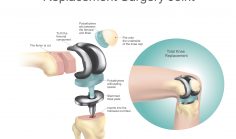Hives, also referred to as urticaria, wheals, welts, or nettle are red, itchy, or raised areas of skin that appear seemingly out of the blue. In addition to itching, which can be mild to severe, hives may burn or sting. Hives can occur on any part of the body such as throat, ears, face, lips. The blotches can range in size from small spots to several inches in diameter. This problem affects about 20% of all people at some time during their lives.
Hives are sometimes triggered by an allergic reaction—an allergen. When the body has an allergic reaction, it releases a protein called histamine. With the release of this protein, the capillaries leak fluid, which accumulate in the skin and cause a rash
Hives are not contagious. Women and children are affected more commonly than men. Hives often goes away in 24 hours or less. As old ones fade, however, new hives can occur.
Acute Urticaria or Acute Hives. When you are symptomatic under six weeks it is considered acute. This is most common, and In 25 % of cases of acute hives the person affected also has angioedema – swelling in the deeper layers of the skin. The swelling causes burning and typically occurs on the eyelids and lips. It generally lasts longer than hives but the swelling typically dissipates in 24 hours
Chronic Urticaria or Chronic Hives. The hives are considered chronic when they last over six weeks. This occurs for 1 in every 1000 people who are afflicted with hives. The cause is likely linked with our immune system. In some cases chronic hives is related to an underlying autoimmune disorder such as lupus. Approximately 50 % of people with chronic hives have angioedema
Anaphylaxis. Urticaria and angioedema are closely related to anaphylaxis – an extremely dangerous condition that can lead to death within minutes or hours. This is an overwhelming allergic reaction that can lead to a multitude of horrors such as collapse of blood circulation, shock, suffocation, swelling of internal organs… It may be caused by the same factors that trigger hives. The most well-known cause is bee sting allergy.











